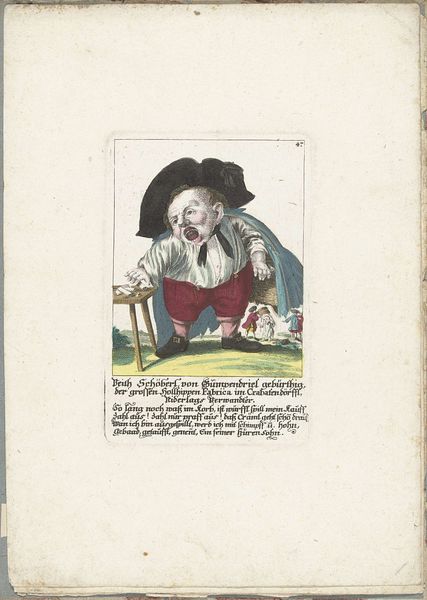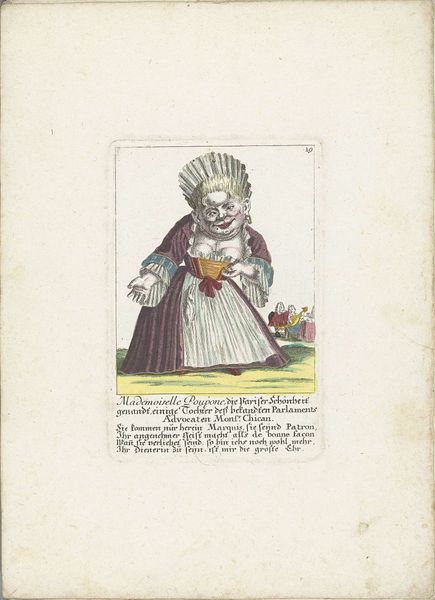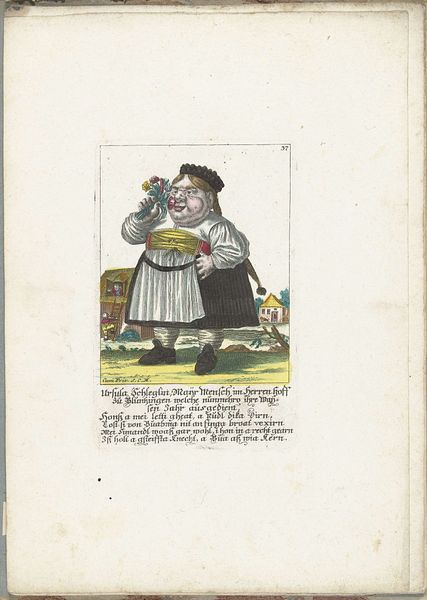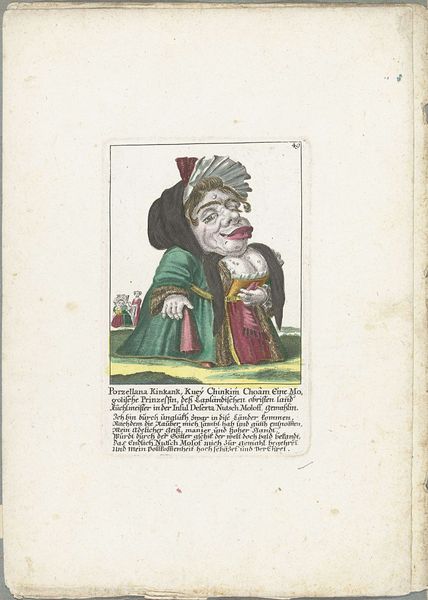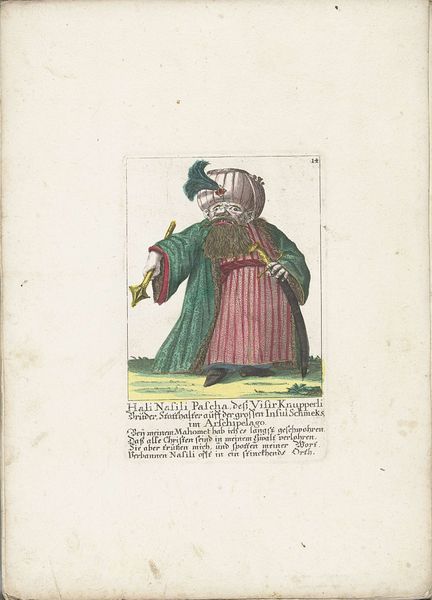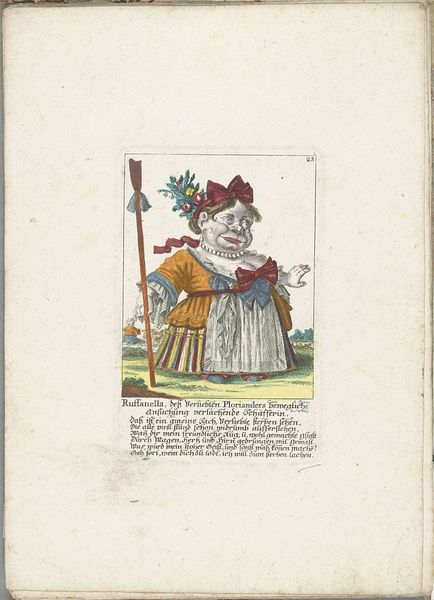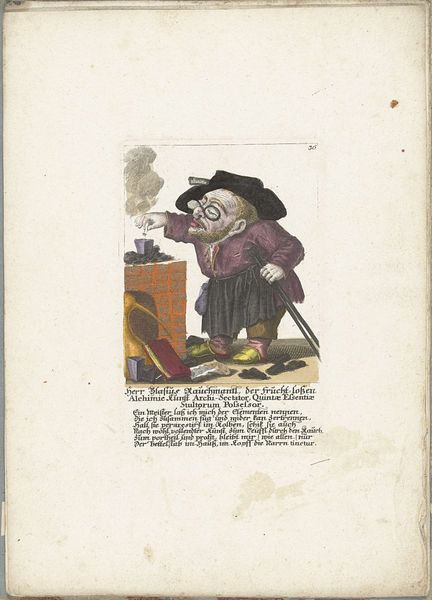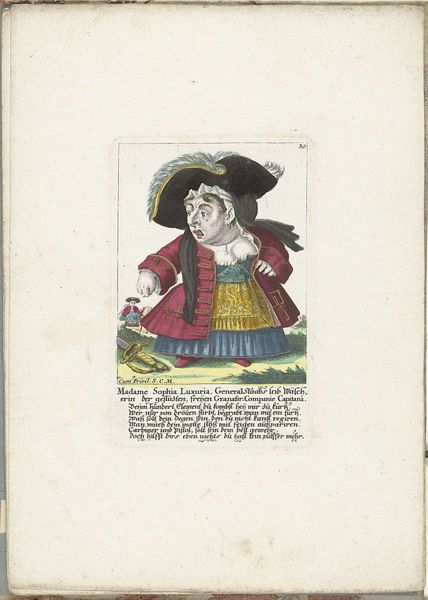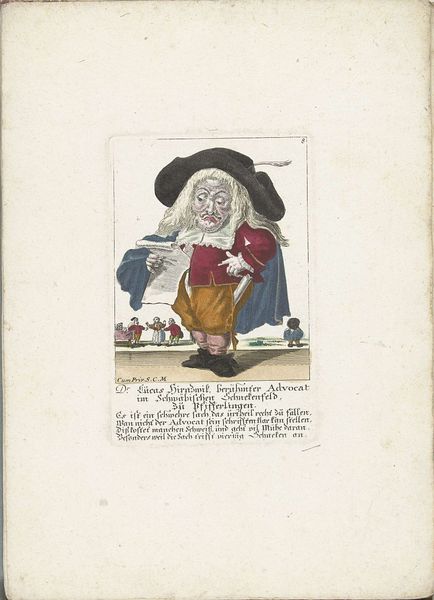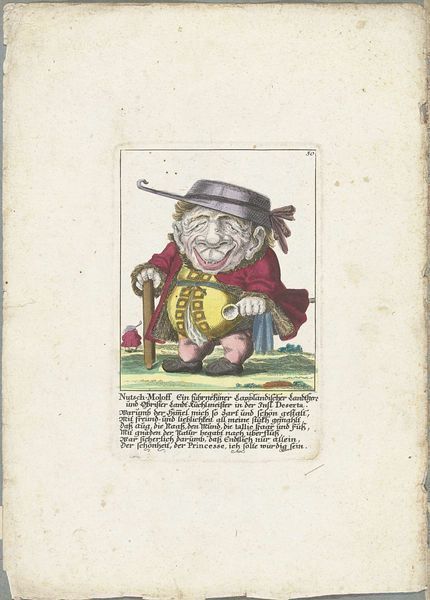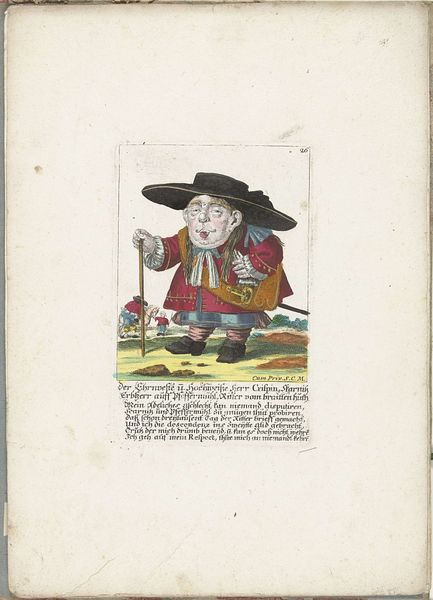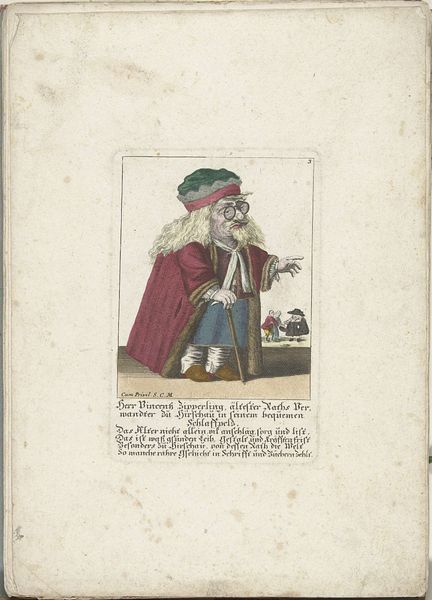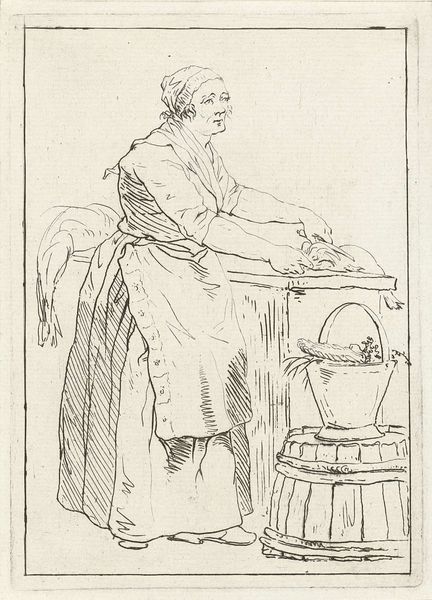
De dwerg Frau Agatha Zipperlingin met hondje, ca. 1710 1705 - 1715
0:00
0:00
print, engraving
#
portrait
#
baroque
# print
#
old engraving style
#
ink colored
#
watercolour illustration
#
genre-painting
#
engraving
Dimensions: height 170 mm, width 110 mm, height 320 mm, width 225 mm
Copyright: Rijks Museum: Open Domain
Around 1710, Martin Engelbrecht created this hand-colored engraving called “The dwarf Frau Agatha Zipperling with dog.” The printing process begins with an image cut into a metal plate. Ink is applied, pressed onto paper, and then delicately painted by hand. Think about the labor involved: the engraver’s precise cuts, the printer’s careful application of ink, and the colorist’s steady hand. Engelbrecht, as the publisher, was responsible for the final commercial product. The engraving’s lines define form, texture, and even emotion, creating the rich details of Frau Agatha’s face and clothing. The added color enhances the image, and speaks to the tastes of the time, as well as its commercial aspirations. The printmaking process itself suggests a world of workshops, trade, and consumption. By understanding the materials and methods of its creation, we appreciate the craftsmanship and the culture that gave rise to it. It’s a fascinating window into the world of early 18th-century printmaking and social commentary.
Comments
No comments
Be the first to comment and join the conversation on the ultimate creative platform.
